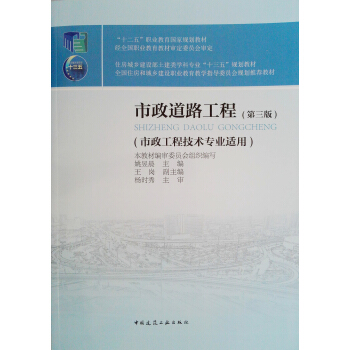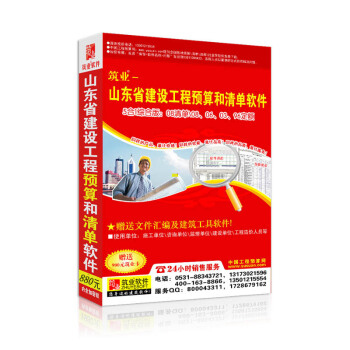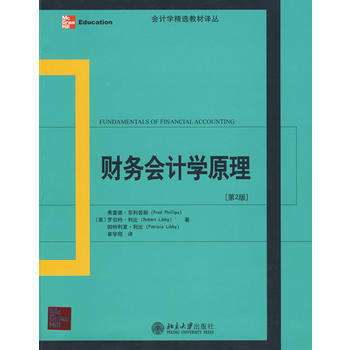具體描述
內容簡介
本書係統介紹瞭公路和城市道路工程的綫形布設原理和方法、路基、路麵工程及其構築物的基本原理與施工工藝。注重理論與實際應用相結閤,在學生難以理解之處均配有例題和圖片,力求做到通俗易懂,並介紹瞭市政工程的新方法、新工藝,增加瞭瀝青路麵結構層的施工案例,全書均采用新版發行的規範,使教材更為實用。
全書分為三篇,共十七章。其中第一篇道路綫形共四章;第二篇路基工程與施工共六章;第三篇路麵工程與施工共七章。
本教材主要作為市政工程專業、土木工程專業、交通工程、城市道路與公路專業及其相關專業的高職教材,也可供從事城市道路和公路交通的成人教育、設計、施工部門的工程技術和管理人員參閱。為方便學習,並配製配套教學課件。
municipal road engineering (third edition) (applicable to municipal engineering technology majors) the book is a textbook for municipal engineering technology majors, focusing on the theory and technology of municipal road engineering. it covers the design, construction, maintenance, and management of municipal roads. the content is divided into several chapters, each focusing on a specific aspect of municipal road engineering. chapter 1 introduces the basic concepts and principles of municipal road engineering. it defines what a municipal road is, its functions, and its importance in urban development. it also discusses the classification of municipal roads, such as expressways, arterial roads, collector roads, and local roads, and their respective design standards. the chapter emphasizes the role of municipal roads in supporting economic activities, facilitating transportation, and improving the quality of urban life. it also touches upon the historical evolution of municipal road engineering and its future trends, including the integration of smart technologies and sustainable practices. chapter 2 delves into the planning and design of municipal roads. it covers the process of road network planning, including traffic demand forecasting, route selection, and land acquisition considerations. the chapter explains the principles of geometric design, such as horizontal curves, vertical curves, and sight distance, and how to apply them to ensure safety and efficiency. it also discusses the design of various road components, including pavement, drainage systems, and traffic control devices. the chapter stresses the importance of considering environmental factors, such as noise pollution and water runoff, in the design process. it also introduces the use of computer-aided design (cad) software for road design. chapter 3 focuses on the materials used in municipal road construction. it discusses the properties and applications of various construction materials, including aggregates, asphalt, cement, and concrete. the chapter explains the methods for testing and quality control of these materials to ensure they meet the required standards. it also covers the production and handling of these materials, as well as their environmental impact and sustainability aspects. new materials and innovative techniques in pavement construction are also highlighted. chapter 4 provides a comprehensive overview of pavement construction. it details the construction methods for different types of pavements, such as asphalt concrete pavements and portland cement concrete pavements. the chapter explains the equipment used in pavement construction, including pavers, rollers, and compactors, and their operation. it also discusses the importance of proper compaction and curing of pavement layers to achieve durability and performance. quality control measures during construction are emphasized, including surface smoothness and thickness control. chapter 5 addresses the design and construction of road drainage systems. it explains the principles of hydraulic design for surface and subsurface drainage, including culverts, ditches, and storm sewers. the chapter discusses the importance of effective drainage in preventing pavement damage, reducing water erosion, and protecting the environment. it also covers the construction methods for various drainage structures and the selection of appropriate materials. issues related to stormwater management and its impact on urban water bodies are also discussed. chapter 6 covers the construction of bridges and tunnels within municipal road networks. for bridges, it discusses different bridge types, structural analysis, and construction techniques. it emphasizes the importance of bridge safety, load-bearing capacity, and durability. for tunnels, it covers tunnel excavation methods, support systems, and ventilation. the challenges associated with constructing tunnels in urban environments are also addressed. the chapter highlights the role of these structures in overcoming geographical obstacles and facilitating smooth traffic flow. chapter 7 focuses on traffic control and safety devices. it explains the design and implementation of traffic signals, road signs, pavement markings, and guardrails. the chapter discusses the principles of traffic flow management and how to optimize traffic operations to reduce congestion and improve safety. it also covers the design of intersections, roundabouts, and pedestrian facilities. the integration of intelligent transportation systems (its) for enhanced traffic management is also introduced. chapter 8 deals with the maintenance and rehabilitation of municipal roads. it discusses common pavement distresses, such as cracking, rutting, and potholes, and their causes. the chapter explains various maintenance techniques, including patching, crack sealing, and surface treatments. it also covers pavement rehabilitation methods, such as overlaying and reconstruction. the importance of a proactive maintenance program to extend pavement life and reduce long-term costs is emphasized. chapter 9 covers the management and operation of municipal road networks. it discusses aspects such as asset management, performance monitoring, and funding mechanisms. the chapter highlights the role of data collection and analysis in informed decision-making for road maintenance and investment. it also touches upon the legal and regulatory frameworks governing municipal road engineering. the chapter also introduces the principles of sustainable road asset management, considering economic, social, and environmental factors. chapter 10 explores emerging trends and future developments in municipal road engineering. this includes the integration of smart technologies, such as sensors and data analytics, for real-time monitoring and adaptive traffic control. the chapter also discusses the development of sustainable and resilient road infrastructure, including the use of recycled materials and green construction practices. the impact of autonomous vehicles and shared mobility on future road design and management is also considered. the chapter concludes by emphasizing the continuous evolution of the field and the need for professionals to stay abreast of new advancements.






















